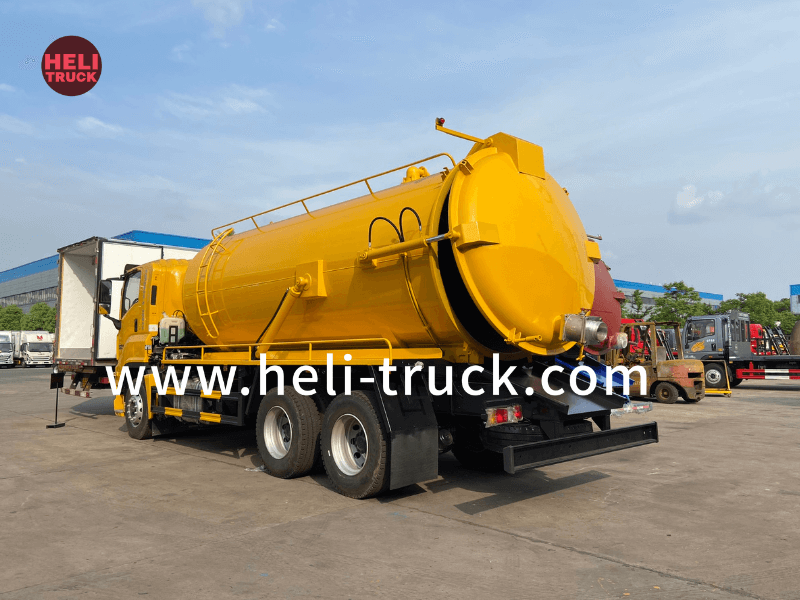Exploring the Diversity of Work Truck Trailer Body Styles
Introduction
Work truck trailers are vital components in the transportation and logistics industry, serving various purposes including hauling goods, equipment, and materials. The design and style of work truck trailers vary greatly depending on the specific needs and requirements of the businesses they serve. In this comprehensive guide, we will delve into the world of work truck trailer body styles, exploring the different types, features, and applications of these essential vehicles.
1. Flatbed Trailers
Flatbed trailers are one of the most common and versatile types of work truck trailers. They feature a flat, open platform without any sides or roof, allowing for easy loading and unloading of goods. Flatbed trailers are widely used for transporting large, bulky items such as construction materials, machinery, and equipment. They are ideal for industries that require quick and efficient loading and unloading processes.
Flatbed trailers come in various sizes and configurations, including standard flatbeds, drop-deck flatbeds, and extendable flatbeds. Standard flatbed trailers have a fixed length and are suitable for transporting general cargo. Drop-deck flatbeds, also known as lowboy trailers, have a lower deck height, making them ideal for hauling taller equipment and machinery. Extendable flatbed trailers can be adjusted to accommodate longer loads, providing flexibility for different types of cargo.
2. Enclosed Trailers
Enclosed trailers are designed with a fully enclosed body that provides protection for the cargo against weather elements and theft. These trailers are commonly used for transporting sensitive or valuable goods such as electronics, appliances, and furniture. Enclosed trailers come in various configurations, including dry vans, refrigerated trailers, and curtain side trailers.
Dry vans are the most common type of enclosed trailers and are used for transporting a wide range of dry goods. They feature solid walls and a roof, providing security and protection for the cargo. Refrigerated trailers, also known as reefers, are equipped with cooling systems to maintain specific temperature conditions for perishable goods such as food and pharmaceuticals. Curtain side trailers have removable curtains instead of solid walls, allowing for easy access to the cargo from the sides.
3. Dump Trailers
Dump trailers are specialized work truck trailers designed for transporting and unloading loose materials such as gravel, sand, and construction debris. These trailers feature a hydraulic lifting mechanism that allows the cargo bed to be raised and tipped to unload the contents. Dump trailers are commonly used in construction, landscaping, and agriculture industries for transporting bulk materials efficiently.
Dump trailers come in various configurations, including end dump trailers, side dump trailers, and bottom dump trailers. End dump Aerial platform truck vehicle safety protocols have a single hydraulic cylinder at the rear of the trailer to lift and dump the cargo. Side dump trailers feature hydraulic cylinders on the sides, allowing for sideways unloading of the materials. Bottom dump trailers have a clamshell gate at the bottom of the trailer, enabling controlled and precise unloading of the cargo.
4. Tank Trailers
Tank trailers are specialized work truck trailers designed for transporting liquids and gases such as fuel, chemicals, and water. These trailers are equipped with cylindrical tanks that are typically made of aluminum, stainless steel, or carbon steel to withstand the specific requirements of the cargo. Tank trailers come in various configurations, including fuel tankers, chemical tankers, and water tankers.
Fuel tankers are used for transporting gasoline, diesel, and other petroleum products, featuring multiple compartments for carrying different types of fuel. Chemical tankers are designed to transport hazardous chemicals and liquids, with specialized coatings and safety features to prevent leaks and spills. Water tankers are used for transporting potable water, irrigation water, and other liquid commodities, with options for insulated and non-insulated tanks based on the cargo requirements.
5. Specialty Trailers
In addition to the common types of work truck trailers mentioned above, there are various specialty trailers designed for specific applications and industries. These trailers are customized to meet the unique needs of businesses requiring specialized transportation solutions. Some examples of specialty trailers include:
- Livestock Trailers: These trailers are designed for transporting livestock such as cattle, horses, and pigs, with features like partitions, ventilation systems, and feeding troughs.
- Car Hauler Trailers: Car hauler trailers are used for transporting vehicles such as cars, trucks, and motorcycles, with ramps and tie-down systems for secure loading and unloading.

- Utility Trailers: Utility trailers are versatile trailers used for a wide range of applications, including hauling landscaping equipment, ATVs, and construction tools.
Conclusion
Work truck trailers come in a wide range of body styles and configurations, each serving specific purposes and industries. From flatbed trailers for general cargo to tank trailers for liquid transportation, the diversity of work truck trailer body styles reflects the evolving needs of businesses in the transportation and logistics sector. By understanding the different types of work truck trailers and their applications, businesses can choose the most suitable trailer to optimize their operations and meet their transportation requirements effectively.